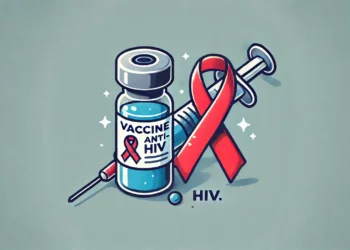
The general consensus is that HIV crossed from chimps to humans at some point in the 1920s in what is now the Democratic Republic of Congo. Experts believe this happened as a result of people hunting and eating chimps carrying the Simian Immunodeficiency Virus (SIV), a virus closely related to HIV. A new study performed by researchers at the University of Arizona confirms this timeline after extracting a nearly complete genetic sequence of an HIV virus from a 50-year-old lymph node.
The tissue belonged to a 38-year-old man in what is now the Democratic Republic of Congo and had been sealed with paraffin inside a repository at the University of Kinshasa for decades. For the last five years, Michael Worobey and colleagues at the University of Arizona have been working to extract the genetic sequence from the HIV-1 virus found in the tiny lymph node. it’s the oldest genetic code for HIV-1 that scientists have recovered thus far, making a decade older than the previous record holder.
Sequencing a complete genome from an archived tissue is an impressive technical feat. Only a decade ago, Worobey and colleagues were able to extract a mere fragment of HIV RNA — not the whole genetic code — from the lymph node belonging to a 60-year-old woman in 1960. Since then, the researchers have been fine-tuning their method to extract even more information.
According to the study, which hasn’t yet been peer-reviewed but which is publicly available on the preprint server bioRxviv, the HIV virus was already extremely genetically diverse in 1960. This means that the viruses had already been transmitting among humans for a while. The only way this could have happened is if the virus had at least a couple of decades to evolve prior to 1960. Ultimately, the researchers concluded that based on these viral sequences, HIV must have diverged from a common source in the early 1900s or perhaps in the late 1800s.
” Inferring the precise timing of the origin of the HIV/AIDS pandemic is of great importance because it offers insights into which factors did—or did not—facilitate the emergence of the causal virus. Previous estimates have implicated rapid development during the early 20th century in Central Africa, which wove once-isolated populations into a more continuous fabric. We recovered the first HIV-1 genome from the 1960s, and it provides direct evidence that HIV-1 molecular clock estimates spanning the last half-century are remarkably reliable. And, because this genome itself was sampled only about a half-century after the estimated origin of the pandemic, it empirically anchors this crucial inference with high confidence,” the authors wrote.






